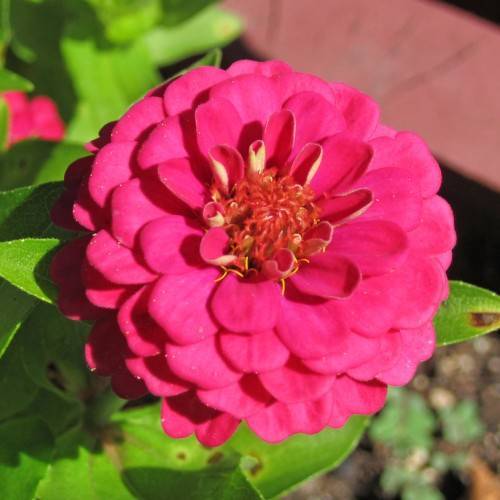
zinnia
Zinnia (group)
Cycle:
Annual
Watering:
Average
Hardiness Zone:
2 - 11
Flowers:
Flowers
Sun:
Full sun
Leaf:
Yes
Growth Rate:
High
Maintenance:
Low
Salt Tolerant:
Yes
watering
Water zinnia plants regularly to encourage healthy growth. Depending on the weather, water your plants once or twice a week, or more during extremely hot or dry weather. Make sure to provide enough water to soak the soil to a depth of 6 inches and allow the top inch of soil to dry out before watering again. Water your zinnia plants in the morning to allow the water to be absorbed gradually throughout the day, and also to discourage mildew growth.
sunlight
Zinnia plants need plenty of sunlight to thrive. It is best to choose an area that receives full sun for at least 6 to 8 hours per day. In regions with hot summers, they should be located in an area that receives filtered sunlight or morning sun. If the plants receive too much direct sunlight, their foliage may burn, causing the leaves to yellow and drop off. In areas with cooler summers, zinnias may benefit from some afternoon shade in order to prevent the plants from wilting in the heat.
pruning
For pruning a Zinnia plant, it is recommended to prune the plant after deadheading and late in the fall season. Pruning should be done to shape the plant and promote bushiness. Stems can be cut back up to 2 thirds of their original length to promote new, shorter stems and flowering. Pruning can be done either by hand with a pair of garden clippers or with a hedge trimmer. It is important to thin the stems of the plant by removing some of the thin, weaker stems to help the stronger ones thrive. Pruning is beneficial for producing more flowers and keeping a bushier, healthier plant.
